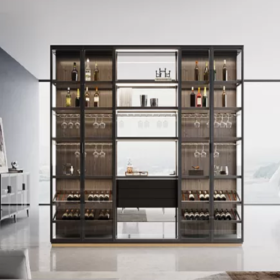Safety Standards and Regulations for Cabinet Pull Handles
Safety Standards and Regulations for Cabinet Pull Handles: Ensuring Safety and Durability
In the world of cabinetry, where aesthetics and functionality intertwine, the humble cabinet pull handle plays a crucial role. Far from being a mere embellishment, these handles serve as essential touchpoints, allowing users to seamlessly open and close cabinet doors and drawers. However, their seemingly innocuous nature belies the stringent safety standards and regulations that govern their design and manufacture.
Importance of Safety
Cabinet pull handles are often overlooked as potential safety hazards. However, their improper installation or poor quality can lead to accidents, particularly for children and the elderly. Handles that are too sharp, have protruding edges, or break easily pose a significant risk of injury. It is therefore imperative that manufacturers adhere to established safety standards to ensure the well-being of end-users.
Regulatory Landscape
The regulatory landscape for cabinet pull handles varies across jurisdictions. In the United States, the Consumer Product Safety Commission (CPSC) sets forth specific requirements for the safety of consumer products, including cabinet hardware. These standards include provisions for both the design and materials used in pull handles.
In Europe, the European Committee for Standardization (CEN) has developed a series of harmonized safety standards for furniture, including EN 14749:2016, which covers the safety requirements for furniture hardware. These standards specify performance criteria for pull handles, such as load-bearing capacity, durability, and resistance to corrosion.
Key Safety Factors
The following factors are crucial for ensuring the safety of cabinet pull handles:
Strength and Durability: Handles must be able to withstand repeated usage without breaking or becoming loose.
Edge Safety: Edges should be rounded or chamfered to prevent cuts and abrasions.
Load-Bearing Capacity: Handles must be strong enough to support the weight of the cabinet door or drawer.
Ergonomics: Handles should be comfortable to grip and operate, regardless of the user’s hand size.
Material Safety: Materials used in pull handles should be non-toxic and free from any sharp or hazardous edges.
Compliance and Enforcement
Manufacturers are legally obligated to comply with all applicable safety standards and regulations. Failure to do so can result in liability for injuries or product recalls. Regular inspections, testing, and certification are essential to ensure that pull handles meet the required safety specifications.
Conclusion
Safety standards and regulations for cabinet pull handles are not merely bureaucratic hurdles but essential safeguards for protecting users from potential hazards. By adhering to these standards, manufacturers can ensure that their products are safe, durable, and compliant with all applicable laws. In doing so, they contribute to a safer and more user-friendly home environment for all.
-
2024-11-29Top Trends in Modern Kitchen Cabinet Pulls for 2024
-
2024-11-28The Ultimate Guide to Modern Kitchen Cabinet Pulls- Materials, Styles, and Tips
-
2024-11-27Elevate Your Kitchen Design with These Must-Have Modern Cabinet Pulls
-
2024-11-26Sleek and Stylish- The Best Modern Kitchen Cabinet Pulls for a Contemporary Look










